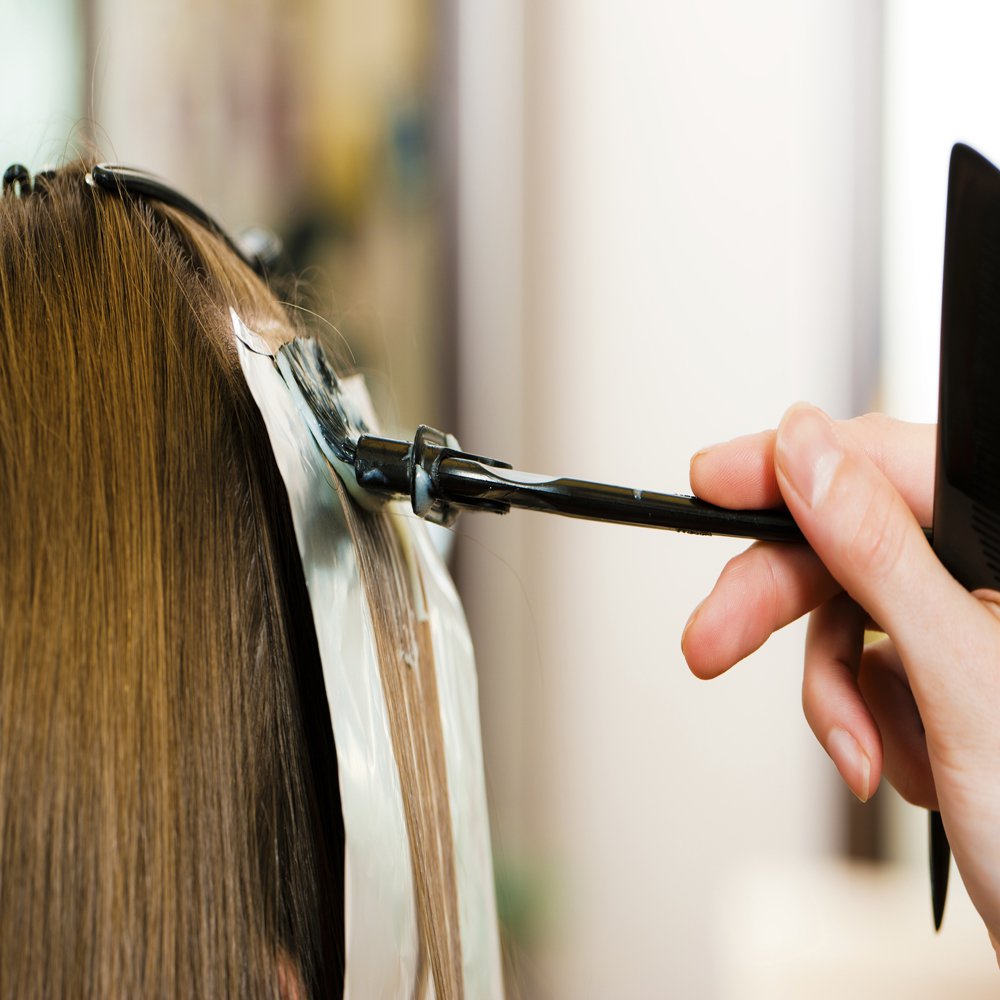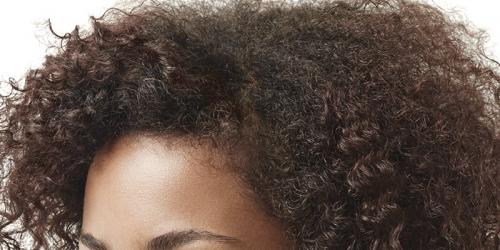The natural color more covering, more durable
Plants, Botanicals ... Whatever the name of these colors, their advantage is the safety. And their limits begin to narrow. If it is still impossible to expect a real blonding (it takes an oxidant, and it is not natural), cover the white hair is finally possible. A real bonus for those who, by dint of classic colors, complain of a sensitized scalp, allergies, or seek to avoid chemicals . Christophe-Nicolas Biot, a natural colorist hairdresser, has developed a new botanical blend of alkaline plants capable of opening the scales to penetrate the pigments and thus - among other things - to camouflage nearly 95% of white hair, hitherto only coated with a classic vegetable coloring.
Only downside, time. It takes two and a half hours for the first appointment: "The work is done in three phases since it must first detoxify the fiber, then open the scales and pre-pigmentation, before applying the final shade, concocted to measure. It's long, but it's also a deep care for fiber, "explains Christophe-Nicolas Biot. Cinnamon, pomegranate, blackcurrant, chamomile, safflower ... this expert plays with more than fifteen different hues, mixing them to revive, darken, brighten, densify or change a basic color. "I can even make a blond on white hair," he enthuses.
For her part, Cathy, colorist and creator of the Atelier des Couleurs , proposes a mixed solution: "I apply the classic coloring - with the lowest possible oxidation - only in roots on white hair, then, on the rest of the hair, a patina 100% vegetable. With the formulas of the Logona brand, I can even get beautiful cold reflections, very difficult with other natural colors. »Other bonuses: vegetable pigments do not oxidize the base (in light, it does not turn red) and the sheathing effect offers a real benefit shine. To maintain the result at home, Cathy advises, before applying the coloring cream (of the same brand), to mix a silicone-free shampoo with a spoonful of baking soda and to leave ten minutes to purify and unclog the fiber . An essential detox necessary so that the plant pigments can then adhere. She also recommends washing them for three days.

Leegudim / iStockphoto.com
However, if the natural proves more and more tempting, all the professionals insist to point out two pitfalls: to launch is a commitment, since certain dyes (in particular those of the algae and the henna) do not allow it with difficulty to go back: "The sheath is so strong around the hair that nothing happens, nothing stays. It's impossible to change the reflections ... unless you work in stages for a year, "warns Romain, precursor in natural pigments. We must also be wary of ecological intoxicants since from only 10% of vegetable ingredients, a brand can claim to be "natural". We learn to read the labels, to ask the right questions or to prepare one's own mix (to read: Natural Hair Color, Gwendoline and Lionel Clergeaud, Ed Dangles, € 18).
- In the living room
House Coiffure Christophe-Nicolas Biot, 52, rue Saint Andre des Arts, Paris 6th, www.christophenicolasbiot.com 01 43 26 58 21.
The Workshop Colors, 4, rue Béranger, Paris 3rd 01 44 61 19 89. Biocoiff ', 5, rue des Scissors, Paris 6th, www.biocoiff.com 01 43 26 77 77.
- At home
100% natural: Logona Coloring Cream, 22 €. Plant and Karité K, for Karité, 18 €. Plant Color Powder Aroma-Zone Walnut Brush, € 3.50.
Less chemicals and more plant (but not only ...): Korrès High Performance Argan Oil, 14,90 €. PhytoColor Hair Permanent Color of Phyto, 11 €.
The softer chemical coloration, more nourishing
Conventional colorations have already made a lot of effort by integrating more and more care assets. But if you want a radical metamorphosis (going from brown to blonde, or vice versa) or that we dream of intense bleaching, we know that the hair will deteriorate. In question: the strong oxidation necessary for any lasting transformation that dries the fiber, makes it lose little by little its material and ends up weakening it. Today, a new technology is changing the field of chemical coloring. Landed recently in the United States, the Olaplex protocol, devised by two American scientists, prevents the breakage of disulfide bridges (essential links between hair keratin proteins), fills their flaws or even succeeds in replacing them. Specifically, it is for the colorist - experienced - to dose and mix an anti-breakage additive with its coloring product.
The break process is twice as long as usual, but it's worth it. "Women, without knowing it, are launching more and more technical challenges. Olaplex allows us to rethink our way of working, to push further the work and the creation without using the fiber ", advance Romain, one of the first colourists to master this technology. What inspire other hair experts and large laboratories, like L'Oréal Professionnel who has just developed its own SmartBond system. Same principle: it is to add during the coloration a molecule (maleic acid) which limits the oxidative stress, protects the disulfide bridges and closes the other connections of the hair like a pinch. To this miracle molecule are added ceramides and polymers, to increase the capillary reinforcement.
Luc, colorist at Frédéric Mennetrier's new Atelier Blanc, who has tested just about everything that exists, says: "The advantage of SmartBond is that it does not dilute the color that is custom-made for each client . So we know exactly the result and the reflections that will be obtained on the hair, without having to rebidouiller its mixture. Exceptional compatibility, therefore, and of course, as is the case with other technologies of this kind, a healthy fiber, preserved, more resistant, soft and ultra-brilliant. Without promising yet zero impact, this evolution is still capital.
- In the living room
Olaplex, at Romain Colors, www. romaincolors.fr, other addresses on www. olaplexfrance.com. Smartbond, at L'Atelier Blanc, www.latelierblanc.com, and at L'Oréal Professionnel hairdressers, www.lorealprofessionnel.fr. Fibreplex, at Schwarzkopf hairdressers, www.schwarzkopfprofessional.fr. SOS Capilexx, at Myriam K, www. myriam-kparis.com.


